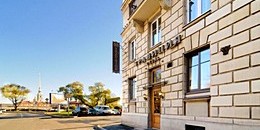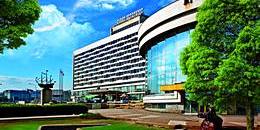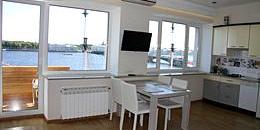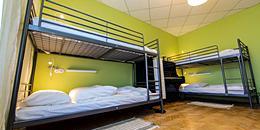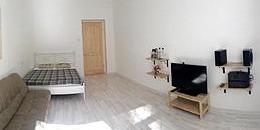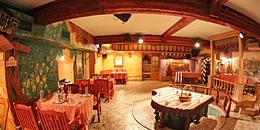Troitskaya Ploshchad (Trinity Square)
Today Troitskaya Ploshchad is a comparatively empty and unremarkable green space. Three hundred years ago, however, the square was a hive of activity. In the shadow of the Peter and Paul Fortress, the first buildings of the new city of St. Petersburg sprung up one after another. Most were wood or wattle and daub, so nothing is left of them but old drawings, blueprints, and maps. The only exception is the Cabin of Peter the Great, the first private house in the city. Built in May 1703, it is protected in a brick pavilion about 200 m off the square.
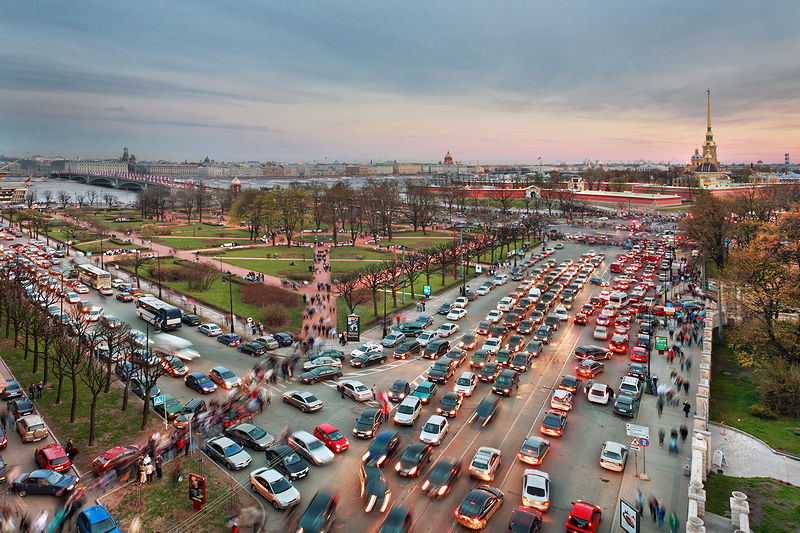
Within the next decade, nearly all of the city's vital institutions developed around the square. The city's original seaport was established on the embankment at the southern end of the square, and the first market for travelling merchants to sell their goods grew up nearby. An inn and hotel to accommodate visitors is presumed to have witnessed Peter's rowdy carousing. The first administrative buildings were constructed here, as were the earliest homes of the nobility, including the first house of Prince Alexander Menshikov, first governor of the city.
At the centre of the square, Domenico Trezzini designed the wooden Troitsky (Trinity) Cathedral. For a long time it was the main cathedral of the St. Petersburg. The square was also used for the reading of royal decrees and for a variety of festivals and military parades. Celebrations took place here in 1721 as the Great Northern War with Sweden came to an end, and St. Petersburg's first triumphal arch was erected here to mark the victory of the young Russian Navy at the Battle of Gangut. On October 22, 1721, Peter was declared the first Emperor of Russia at this site.
From 1720 onwards, however, the area started to lose its significance. The port and the administrative center of the city moved to Vasilievsky Island, and during the 1720s and 1730s fires destroyed almost all of the buildings on Troitskaya Ploshchad. The only one rebuilt was the Troitsky Cathedral in 1756, this time in stone. Nevertheless, life on the square did not slow down and it continued to play host to many celebrations, firework displays, military parades, and public executions.

During St. Petersburg's bicentennial celebrations in 1903, the area was connected to the opposite bank of the Neva by the new Troitsky Bridge. This brought new life to the area, and grandiose plans were developed for Troitskaya Ploshchad. One proposal was to rename the square in honour of the Romanov family and line it with statues of all the Romanov Tsars. It was after the Bolshevik Revolution, however, that the square was finally renamed, first to honour the Paris Communards, and then as Ploshchad Revolyutsii ("Revolution Square").
The first major construction project of the Soviet era was the House of Political Prisoners, a magnificent example of Petersburg constructivism. Built 1929-1933 to house victims of political persecution under the tsarist regime and their families, the House was remarkably advanced for its day. Each apartment had hot running water and a bathroom, while dining was in a communal canteen, and the building also contained a kindergarten, a sun room, and a medical center. Alas, it was not long before this 'refuge' was destroyed by a new strain of tyranny. By 1938, 132 of the 144 families living in the house had been repressed in Stalin's Great Purge: adults were sent to labor camps or shot, and the children dispatched to special children's homes. In 1990, the center of the square was chosen as the site of a granite memorial inscribed to the "victims of political repression in Petrograd-Leningrad."
In a nicely revealing architectural juxtaposition, the House of Political Prisoners was soon dwarfed by the neighboring Leningrad Scientific and Research Institute of Planning, the main institution of urban planning and architecture throughout the Soviet period. Completed in 1956, the Institute's main building and adjoining residential block are an example of the "Stalinist Empire" style at its most derivative, dominating the surroundings with the sheer bulk of its dimensions alone. According to original plans, the building should also have subsumed the House of Political Prisoners to create a unified symmetrical facade stretching the length of the square. Like many projects of the post-war construction boom, however, it ran out of steam as the workers of the Institute of Planning were urged to turn their attention away from grandiose public projects and focus again on the provision of plentiful cheap housing for the masses, a partial return to the tenets of constructivism.
On the opposite side of the square, the 20th century history of the Troitsky Cathedral is another instructive story. Ruined by fire in 1913, it was supposed to be demolished and replaced with a new larger church, but disagreement over designs and financing hampered the project in the final years of the Tsarist regime. Restoration of the original building in fact began under the Soviets in 1924, and was completed four years later. However, it soon became apparent that the "Square of the Revolution" was no place for such a symbol of reactionary sentiment, and only five years later in 1933 the cathedral was completely demolished.
The square resorted to its original name in 1991. Throughout the 1990s there were calls to reconstruct the Troitsky Cathedral, but for whatever reason these never came to fruition. Instead, to mark the 300th anniversary of St. Petersburg, a small memorial chapel commemorating the cathedral was unveiled in the south-west corner of the square.
| Metro stations: | Gorkovskaya |
|---|---|
| Directions: | On exiting Gorkovskaya metro station, head out of the park and bear right along Kamennoostrovsky Prospekt towards the Neva River. |
| What's here? | House of Political Prisoners |
| What's nearby? | St. Petersburg Mosque, Kschessinska Mansion / Museum of the Political History of Russia, Petrovskaya Naberezhnaya (Peter's Quay), Kamennoostrovsky Prospekt, Kronversky Prospekt, Peter and Paul Fortress, Troitsky Bridge, Alexander Park |

